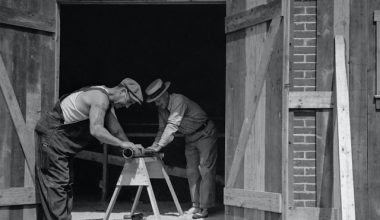Comparative advantage is very important for figuring out what kinds of goods and services a country will choose to import or export. Governments examine their comparative advantages in several sectors to identify which goods they can manufacture at a lower opportunity cost than other nations. Hence, understanding this can aid you in logistics, finance, or government positions that involve international trade. In this article, we will discuss the law of comparative advantage formula, its examples, and the difference between absolute and comparative advantage.(absolute advantage vs comparative advantage). Read on!
Preamble
If a nation can manufacture a particular good or service at a lower opportunity cost than its trading rivals. Then, it is said to have a comparative benefit. Opportunity cost analysis illustrates a trade-off by highlighting the potential benefits that a company, person, or investment forgoes when they choose one course of action over another. The country with the lowest opportunity cost has a comparative advantage in a certain field. Thus, a corporation with this theory may be able to undercut its rivals.
In addition, a nation with a comparative advantage may encourage other nations to import its goods or services because the advantages exceed the disadvantages. Higher profit margins could result from increasing sales.
What Is a Comparative Advantage in Economics?
It is seen as a means of producing an item at a lower cost than competitors gives one an economic edge. While it’s true that you’re better than everyone else, having a comparative advantage does not make you number one. In truth, a person need not be particularly skilled in order to enjoy this advantage.
Considering Comparative Advantage
Free trade helps all countries equally since it is founded on the fundamental idea of comparative advantage, a central notion in international trade. Many economies and countries utilize it to decide which goods and services to sell or import. Countries that are better tend to specialize since making one good is more efficient and cheaper than making many. Hence, to take advantage of a lower opportunity cost and boost profit margins, they may spend more time, money, and resources on this product.
How Do Countries Gain Comparative Advantage?
A nation possesses this advantage when it can produce at a lower opportunity cost than its trading counterparts. However, a nation cannot have a comparative advantage in the production of all commodities and services, but it can have an absolute benefit among all goods.
Comparative Advantage Examples
Generally, giving examples is the most effective approach to demonstrating comparative advantage. Take a look at these six examples of comparative advantage to learn more about this economic strategy:
Example 1
This is one of the examples of comparative advantage. Indian telecommunications companies do this because hiring Indian customer care workers is cheaper than opening a US call center. They use the money they saved to charge less than their competitors for internet and phone services. Despite their substandard internet and phone service, customers sign up to save money. In this case, offering a less expensive service is more important than offering a high-quality service. This gives this telecom provider a competitive edge over other US carriers.
Example 2
In Puerto Rico, an hour’s worth of labor can result in five textile items or 10 wine bottles. 20 wine bottles or 20 pieces of linen can be produced in France with one hour of labor. France produces wine and cloth, while Puerto Rico produces only wine. Puerto Rico may make more wine than textiles because it has a lower opportunity cost than France.
Example 3
This is also one of the examples of comparative advantage. Since selling oil to the domestic chemical industry is cheaper than exporting it, a nation that produces a lot would lower its price. Because they spend less on raw resources, chemical manufacturers may be able to sell their products cheaper than other nations. As a result, they are better able to compete in the chemical production industry. This company thus has an advantage over other chemical-producing companies.
You may want to see: Comparative Market Analysis: Real Estate Management
Law of Comparative Advantage
In 1817, David Ricardo came up with the law of comparative advantage. He explains why countries trade despite though their businesses, factories, and people make every good better than their competitors. He provided the following example to support his argument:
- Imagine Portugal and England had a trade agreement for wine and textiles. Early economists realized the benefits of such a trade if Portugal produced better wine and England produced better textiles.. The nations would focus on the areas where they were plainly superior. In other words, each country would focus on its own strengths rather than those of its competitors.
- Ricardo showed that trade could thrive even when England ranked first in the world for both wine and textile production. What if England produced wine that was only slightly better than Portugal but much better fabric than Portugal? If England made fabric and Portugal wine and traded, both countries might create more. Despite losing its absolute advantage, Portugal was still able to produce wine at a higher level than other countries. When compared to the possibility of producing textiles, still wine was the Portuguese product that was the most competitive.
- The level of trade between Bangladesh and the US today is close to earlier levels. The US makes more garments and high-tech goods than Bangladesh. However, Bangladesh is far behind the US in technology manufacturing but close in garment production. Manufacturing textiles in Bangladesh, cutting-edge technology in the US, and trading between the two countries stands to reason.
What Are the Characteristics of Comparative Advantage?
Comparative advantage implies that an economy can make a certain good or service for less money than its trading partners. Hence, this theory also adds “opportunity cost” to the list of things to think about when deciding between different ways to make something.
Comparative Advantage Formula
To determine if one country has a comparative advantage over another while producing the same commodities locally. Economists employ a calculation known as the “comparative advantage formula.” A country can generate more of a good than another. That is to say, the country with the largest output may not have a competitive advantage over others. Understanding the opportunity cost of producing other goods is essential to identifying a competitive advantage.
The comparative advantage formula is determined by looking at the estimated cost of a collection of products. Consider two neighboring countries producing two distinct collections of comparable things. Since both goods require the same amount of skilled labor, we must calculate the opportunity cost of producing one over the other.
Relevance and Use of Comparative Advantage Formula
It is essential to determine each nation’s comparative benefit from a particular good. Countries produce goods in regions or countries where they have a greater advantage due to labor, population, or prevailing natural circumstances. When nations produce based on their comparative advantages, as we saw in the situation above, overall economic production for both countries may be higher. It kind of raises the prospect of major growth in trade between the two countries. Finding each country’s comparative benefit for a particular good is essential in the modern world. As seen by the aforementioned example, if nations produce based on their comparative advantages, the total economic production of those nations may be higher. The possibility that trade between the two countries will greatly increase is increased by this. In the current era of globalization, comparative advantages are the key factors.
Therefore, Comparative Advantage formula = Quantity of Good A for Country X / (divide by) Quantity of Good B for Country X
What Is a Comparative Advantage vs Absolute Advantage?
A company’s absolute advantage is its capacity to create more of a good or service than a rival; Comparative advantage: When a producer can create a good or service for less money than a rival.
Absolute Advantage vs Comparative Advantage
The absolute advantage is the capacity of a nation to produce a specific good successfully and efficiently at a much lower marginal cost. If a country can produce a good with less labor, less capital investment, less time, and less money without sacrificing quality, it has a significant advantage.
A country may be able to manufacture a certain good at a lower marginal cost and opportunity cost when it has comparative advantages over other countries. In contrast to absolute advantage, which focuses solely on marginal cost, comparative advantages considers both marginal and opportunity cost.
Key Differences Between Absolute Advantage vs Comparative Advantage
Let’s examine some of the main distinctions between the market’s absolute and comparative benefits.
- Key concepts in international commerce, such as absolute and comparative advantages, help governments decide how to produce goods domestically, allocate resources, and implement import, export, and other trade rules.
- The nation’s intrinsic ability to manufacture specific goods profitably and successfully for a significantly lower marginal cost is its Absolute Advantage. On the other hand, comparative advantage describes a country’s capacity to produce a certain good at a lower marginal cost and opportunity cost.
- The lower marginal cost of manufacturing a good is the basis for absolute advantage. Conversely, comparative advantage draws attention to the reduced opportunity cost of manufacturing a particular good in one nation as opposed to another.
- Those nations that have a distinct edge in production focus on boosting output while utilizing the same resources. However, nations with comparative advantage consider the production of a variety of goods in their assessments of resource allocation and production of a particular good.
- Absolute advantage is less effective than a comparative advantage in influencing how nations allocate resources, produce goods, and conduct trade.
- By definition, trade agreements that benefit one nation over another do not always benefit all sides. Trade decisions based on comparative advantages are always beneficial to both sides.
- Absolute advantage stresses output maximization, which may not be the best or most effective course of action for the economy because it disregards the opportunity cost of production. However, comparative advantage is more helpful in guiding a country’s decisions about resource allocation, local production, and commodity import/export.
What Causes Comparative Advantage?
This is based on how many hours of work are needed to make each item. Ricardo’s theory of comparative advantage was based on how different types of labor were productive. However, economists have agreed with Ricardo that differences in productivity are the main cause of this theory.
What is China Comparative Advantage?
A current illustration is that China has a labor cost advantage over the United States. Simple consumer goods are produced by Chinese employees at a far lower opportunity cost. Specialized, capital-intensive labor is an area where the United States has a competitive advantage.
What is China Competitive Advantage?
A large market could result from a large population and available land. The middle class in China is also expanding quickly; it now outnumbers the whole population of the US and is projected to reach 800 million people within the next 15 years.
When Do a Country Has a Comparative Advantage?
A nation has a comparative advantage economically when it can produce with a lower opportunity cost than its trading partners. A country can have an absolute benefit in manufacturing all goods, even though it cannot have a comparative benefit in all goods and services.
Which Situation Is an Example of Comparative Advantage in an International Market?
For instance, nations with abundant oil resources can typically produce oil affordably. Saudi Arabia has a competitive advantage in oil due to its inexpensive oil production, and it exports oil to pay for its imports.
How Does Comparative Advantage Increase Economic Growth?
A country might lower its average capital-to-output ratio by specializing based on this theory, which would allow for a higher rate of output growth for any given investment level.
References
- educba.com
- wallstreetmojo.com
- masterclass.com
- indeed.com






